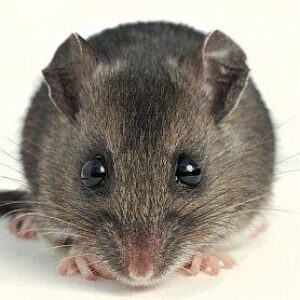
Hantavirus Death Reported in Spokane County; Man Likely Exposed in Adams County
For more information, please contact Kim Papich (509) 324-1539 or kpapich@srhd.org
SPOKANE, Wash. – July 6, 2017 – Spokane Regional Health District (SRHD) and Adams County Health Department announced today a Spokane County man in his 50s has died from complications of hantavirus disease, or hantavirus pulmonary syndrome. The rare respiratory illness is caused by infection with a hantavirus, usually spread by infected mice droppings. The man likely came into contact with the virus inside a barn located in Adams County, Washington. This is Spokane’s first-ever confirmed case of, and fatality attributed to, hantavirus.
“We want to acknowledge how tragic this unexpected death must be for this man’s family and friends,” said Dr. Bob Lutz, SRHD health officer. “Although the reality is this type of death is rare in our area, we need to balance it with a message of precaution.”
In the Northwest, deer mice are the only carriers of this hantavirus strain. The greatest risk for exposure occurs when people enter enclosed areas with mice infestation and poor air circulation. The virus, which is found in mice urine, droppings and saliva, gets in the air as mist or dust when droppings or nests are disturbed. It can be spread to humans who then inhale the virus. Hantavirus can also be transmitted by handling mice or by touching the nose or mouth after handling contaminated materials. Hantavirus disease is not transmitted from person to person.
To avoid contact with potentially infectious mice and their habitats, officials urge people to follow safety precautions when working in or cleaning barns, sheds, outbuildings, warehouses, and summer cabins that have not been occupied. Infected deer mice can infest homes as well. Seal holes and gaps in the home or garage and place traps in and around the house to decrease infestation. Clean up any easy-to-get food and feed pets indoors. Click here for important tips to avoid exposure when cleaning rodent-infested areas.
Despite this being Spokane County’s first hantavirus case and death, Washington cases do typically occur east of the Cascade Mountains. In Adams County, there have been five confirmed cases since 1994, the most recent occurring in 2014, with one hantavirus-related death occurred in 2009.
In recent years, there were on average two confirmed cases in the state. Yet, per Washington State Department of Health (DOH) officials, this is the state’s fifth case of hantavirus disease in 2017 and third death. The other confirmed cases occurred in King (two cases), Skagit (one case), and Franklin (one case) counties, although, again, cases typically occur in eastern counties.
Hantavirus was first recognized in 1993. Between 1993 and 2001, over 1,100 deer mice were tested in the state for infection from the virus—about 14 percent tested positive. Since recognition of the virus, 47 cases were reported statewide through 2015 with 16 (34 percent) associated deaths. Washington has the fifth largest number of cases in the United States.
Hantavirus disease symptoms in humans are flu-like and usually begin one to three weeks after exposure, but can occur up to eight weeks after exposure. The illness is characterized by fever, chills and muscle aches, followed by the abrupt onset of respiratory distress and shortness of breath. Other symptoms include nausea, vomiting, and abdominal pain. If an individual experiences an abrupt onset of flu-like symptoms after cleaning rodent waste, they should consult their health care provider immediately. There is neither a vaccine to prevent infections, nor is there a treatment other than supportive care.
For more information on hantavirus in Spokane County, go to srhd.org or its Bring It, Summer Pests! campaign pages located here. Statewide information is available on the Washington State Department of Health website here, and national information on the U.S. Centers for Disease Prevention and Control web page located here. Become a fan of SRHD on Facebook to receive local safety and wellness tips. You can also follow SRHD on Twitter @spokanehealth.
